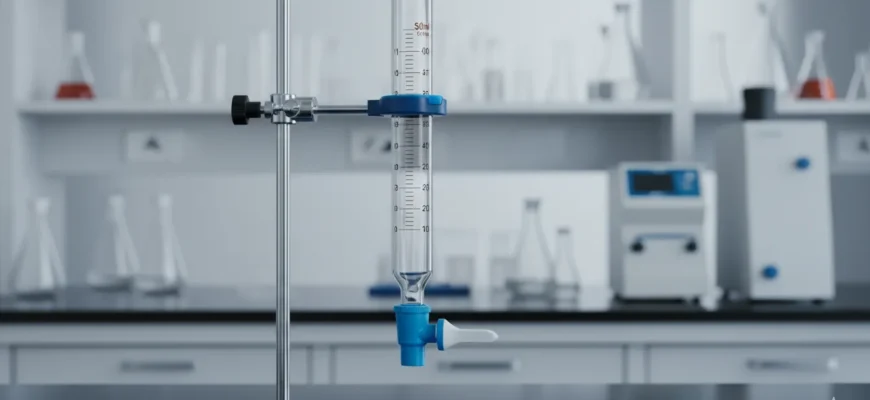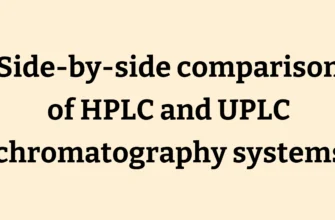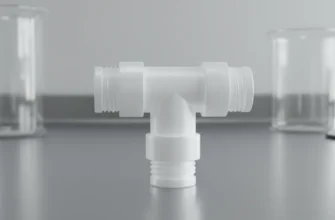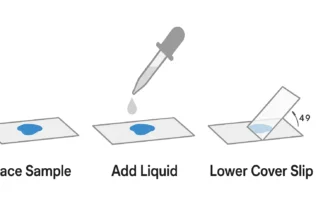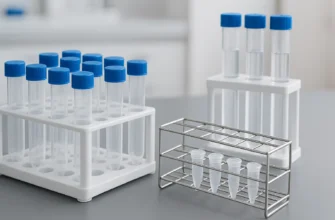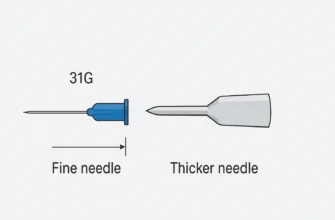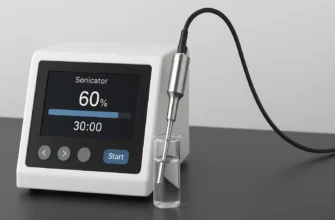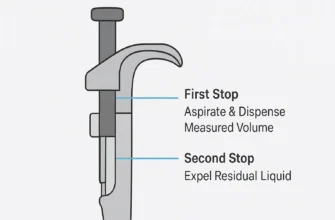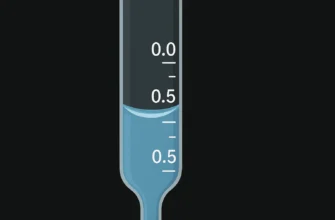Mass Burette: Essential Tool for Precise Liquid Measurement
What is a Burette?
A burette (also spelled buret) is a graduated glass or plastic tube with a tap or stopcock at one end, specifically designed for delivering known volumes of liquid in analytical chemistry. This fundamental laboratory instrument consists of a long, cylindrical tube with precise graduations along its length and a valve system at the bottom to control liquid flow. Unlike volumetric pipettes that deliver fixed volumes, burettes can dispense variable amounts of liquid with exceptional accuracy, making them indispensable for titration procedures and quantitative analysis.
The term “burette” was coined by French chemist Joseph Louis Gay-Lussac in 1824, along with the term “pipette,” in a paper about the standardization of indigo solutions. The word derives from French “burette,” a diminutive of Old French “buire” meaning “vase for liquors” or “jug,” which itself comes from Germanic origins.
Key Features and Design Elements
Construction and Materials
Modern burettes are typically constructed from borosilicate glass 3.3, which offers excellent chemical resistance and thermal stability with a softening point of 820°C. The most common capacities range from 10 mL to 100 mL, with precise graduations that allow readings to 0.01 mL or 0.02 mL depending on the size. The graduated tube features clear, permanent markings with high-contrast colors to facilitate accurate volume readings and reduce parallax errors.
Stopcock Systems
The stopcock at the bottom of the burette is crucial for flow control. Modern burettes commonly use PTFE (polytetrafluoroethylene) stopcocks rather than traditional glass stopcocks. PTFE stopcocks offer several advantages:
-
Excellent chemical resistance to acids, bases, and organic solvents
-
Self-lubricating properties that eliminate the need for grease
-
Smooth, precise flow control from continuous streams to drop-by-drop dispensing
-
Leak-proof operation over extended periods
Burette Classes and Accuracy Standards
Class A vs Class B Burettes
Burettes are manufactured according to international standards that define their accuracy tolerances:
Class A Burettes represent the highest precision category, conforming to ASTM E287 and DIN EN ISO 385 standards. These burettes feature:
-
Tighter tolerance specifications (e.g., ±0.03 mL for a 25 mL Class A burette)
-
Individual or batch certification with NIST traceability
-
Permanent, high-contrast graduations for precise readings
-
Primary use in quantitative analysis and research applications
Class B Burettes offer standard precision suitable for general laboratory use:
-
Double the tolerance of Class A (e.g., ±0.06 mL for a 25 mL Class B burette)
-
Typically no individual certification required
-
Standard graduations with less detailed markings
-
Common in educational settings and routine analyses
International Standards Compliance
Burettes must comply with specific international standards:
-
ISO 385:2005 specifies tolerances, delivery volumes, and testing procedures
-
DIN EN ISO 385 provides European specifications for volumetric accuracy
-
ASTM E287 covers American standards for laboratory glassware tolerances
The maximum permissible errors according to ISO 385:2005 are clearly defined for different capacities and classes:
| Capacity (mL) | Subdivision (mL) | Class A Error (±mL) | Class B Error (±mL) |
|---|---|---|---|
| 10 | 0.02 | ±0.02 | ±0.05 |
| 25 | 0.05 | ±0.03 | ±0.05 |
| 50 | 0.10 | ±0.05 | ±0.10 |
| 100 | 0.20 | ±0.10 | ±0.20 |
Modern Digital and Electronic Burettes
Advanced Features
Digital burettes represent a significant advancement over traditional glass burettes, offering enhanced precision and reduced human error. Key features include:
-
Digital displays that eliminate meniscus reading uncertainties
-
Motor-controlled dispensing with multiple speed settings for precise control
-
Programmable volume settings for repeated dispensing operations
-
Data logging capabilities with RS-232 or RS-485 interfaces for computer connectivity
-
Temperature compensation for accurate measurements across different conditions
Precision and Accuracy
Modern digital burettes achieve exceptional accuracy tolerances as low as ±0.02-0.05 mL for Class A compliance. The Sartorius Biotrate series, for example, offers:
-
Volume range from 0.01 mL to 99.99 mL
-
Resolution of 10 μL (0.01 mL)
-
Precision similar to Class A glass burettes
-
High chemical resistance through FEP (fluorinated ethylene propylene) construction
Primary Applications Across Industries
Pharmaceutical Industry
Burettes are essential in pharmaceutical manufacturing and quality control for:
-
Purity analysis of active pharmaceutical ingredients
-
Content uniformity testing of drug formulations
-
Precipitation titrations for drug identification
-
pH-stat titrations for stability testing
The pharmaceutical industry requires the highest accuracy standards, making Class A burettes with individual certification mandatory for regulatory compliance.
Food and Beverage Industry
In food analysis, burettes are used for:
-
Acidity determination in wine, fruit juices, and dairy products
-
Salt content analysis through chloride titrations
-
Vitamin C quantification using iodometric titrations
-
Quality control testing to meet regulatory requirements
Automated titration systems with digital burettes are increasingly common in food processing facilities for high-throughput analysis.
Environmental and Water Analysis
Water quality testing relies heavily on burette-based titrations for:
-
Hardness determination using EDTA titrations
-
Chloride content measurement in drinking water
-
Alkalinity and acidity testing of environmental samples
-
Chemical oxygen demand (COD) analysis in wastewater treatment
Chemical Manufacturing
In chemical production, burettes serve critical roles in:
-
Raw material analysis for incoming quality control
-
Product purity verification before shipment
-
Process monitoring through routine titrations
-
Research and development of new chemical processes
Proper Use and Maintenance
Reading Technique
Accurate burette readings require proper technique:
-
Read the meniscus at eye level to eliminate parallax error
-
Record readings to the nearest 0.01 mL
-
For aqueous solutions, read the bottom of the meniscus
-
Ensure the burette tip touches the receiving vessel wall to remove adhering drops
Calibration Requirements
Regular calibration is essential for maintaining accuracy:
-
Frequency: Every 6-12 months or as required by laboratory protocols
-
Method: Gravimetric calibration using distilled water at controlled temperature
-
Standards: Follow DIN EN ISO 8655-3 or equivalent standards
-
Documentation: Maintain calibration records for quality assurance compliance
Cleaning and Storage
Proper maintenance extends burette life and ensures accuracy:
-
Rinse thoroughly with distilled water after each use
-
For stubborn residues, use appropriate cleaning solutions following manufacturer guidelines
-
Avoid crystallizing media that can damage internal components
-
Store in a secure, vertical position with stopcock closed
-
Replace PTFE stopcocks when flow control becomes imprecise
Burette vs Pipette: Understanding the Differences
While both instruments measure and transfer liquids, they serve different purposes:
Burettes:
-
Deliver variable volumes with high accuracy
-
Primary use in titrations where incremental addition is required
-
Larger capacity (typically 10-100 mL)
-
Can deliver any volume within their range
-
Less precise for small, fixed volumes compared to pipettes
Pipettes:
-
Designed for fixed, precise volume delivery
-
Superior accuracy for specific volumes (e.g., 0.2% error margin for 10 mL Class A pipette)
-
Smaller volumes (typically 1-25 mL)
-
Optimized for sample preparation and quantitative transfers
-
Not suitable for variable volume dispensing
Limitations and Important Considerations
What Burettes Cannot Do
Burettes are not suitable for powder dispensing. Their design specifically caters to liquid measurement and delivery. The graduated glass tube and stopcock system are engineered for controlling liquid flow, making them ineffective for handling solid materials or powders. Attempting to use burettes for powder dispensing would result in inaccurate measurements and potential damage to the instrument.
Selection Criteria
When choosing a burette, consider these factors:
Accuracy Requirements: Class A for high-precision work, Class B for general use
Chemical Compatibility: Glass for most applications, specialized materials for aggressive chemicals
Volume Range: Match capacity to typical experimental needs
Automation Level: Manual for basic work, digital for high-throughput applications
Budget Constraints: Balance precision requirements with cost considerations
Leading Manufacturers and Quality Assurance
Reputable manufacturers ensure burette quality and reliability:
-
Corning (Pyrex): Industry standard for borosilicate glass burettes with ASTM E287 compliance
-
DWK Life Sciences (Kimble): High-quality Class A burettes with NIST traceability
-
Sartorius: Premium digital burettes with advanced automation features
-
Thermo Fisher Scientific: Comprehensive range from basic to automated systems
-
Eisco Labs: Cost-effective solutions meeting international standards
These manufacturers provide certificates of compliance, often with individual serial numbers for traceability in regulated environments.
Conclusion
The burette remains an indispensable tool in analytical chemistry, combining traditional precision with modern technological advances. From Gay-Lussac’s original 1824 design to today’s sophisticated digital systems, burettes continue to evolve while maintaining their core function: delivering precise, variable volumes of liquid for quantitative analysis.
Understanding the different classes of burettes, their appropriate applications, and proper maintenance procedures ensures reliable results in laboratory work. Whether performing routine quality control testing or conducting cutting-edge research, selecting the right burette and using it correctly is fundamental to analytical success.
The investment in quality burettes—whether traditional Class A glass instruments or advanced digital systems—pays dividends in measurement accuracy, regulatory compliance, and experimental reproducibility. As analytical requirements become increasingly stringent across industries, the burette’s role as a precision instrument continues to be crucial for reliable chemical analysis.

